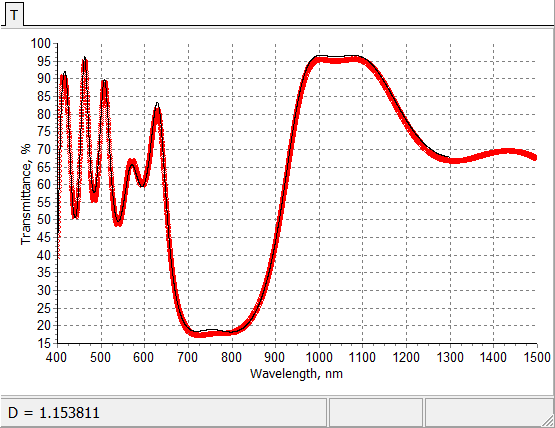| OptiRE is intended for the post-production characterization (reverse engineering) of optical coatings based on spectral photometric or/and ellipsometric data. Reverse engineering provides a feedback for the design-production chain. Its main purpose is to discover errors in parameters of produced coatings, calibrate monitoring device and thus to help raise the quality of an optical coating production. | |
|
OptiRE provides a number of powerful options allowing extraction maximum information from the available experimental data, among them
|
 |
 |
There is a variety of auxiliary options making your work with experimental data and obtained results very flexible:
|
| Post-production characterization (Reverse Engineering) algorithms are based on the optimization of the discrepancy function estimating the closeness between measured spectral characteristic and the characteristic of the model coating with respect to the model parameters:
\[ DF^2(X)=\left(\frac 1L\sum\limits_{j=1}^L \frac{S(X;\lambda_j)-\hat{S}(\lambda_j)}{\Delta_j}\right)^2 \rightarrow \min,\] where \(S\) is the model spectral characteristic of the coating, \(\hat{S}\) is the measurement characteristic, \(X\) is the vector of model parameters, \(\{\lambda_j\}, j=1,…,L\) is the wavelength grid, \(\Delta_j\) are measurement tolerances. |
|
| OptiLayer provides a wide set of optical coating models and very powerful algorithms as well as special mathematical tools such as Tikhonov’s regularization. Choosing of he model adequately describing your optical coating and verification of the results are not straightforward tasks. OptiLayer proposes various tools for reliable post-production characterization.
All our reverse engineering models and approaches have been carefully tested and verified in the frame of collaboration with researches from world leading laboratories and institutes. You can find many useful advises in our publications on characterization and on reverse engineering. References:
|
|
Look our video examples at YouTube
OptiLayer videos are available here:
Overview of Design/Analysis options of OptiLayer and overview of Characterization/Reverse Engineering options.
The videos were presented at the joint Agilent/OptiLayer webinar.